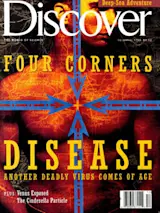That sign in a Hong Kong tailor shop was not translated by CITAC, a computer that converts written Chinese into usable English.
Chinese is one of the most beautiful of written languages, and also one of the most complex. Its intricate characters, developed centuries before the first alphabets were invented, bear no resemblance to Greek or Roman letters. And unlike the picture symbols of ancient hieroglyphics, they do not usually resemble objects either. Instead, each boxy character represents a word or part of one. That means there have to be a lot of characters--around 50,000 of them, of which a Chinese person must recognize at least 2,000 just to read the morning paper. To complicate things even more, the characters are strung together without spaces to signal where one word ends and another begins. The strings usually run across the page from left to right, but sometimes, especially in older ...














